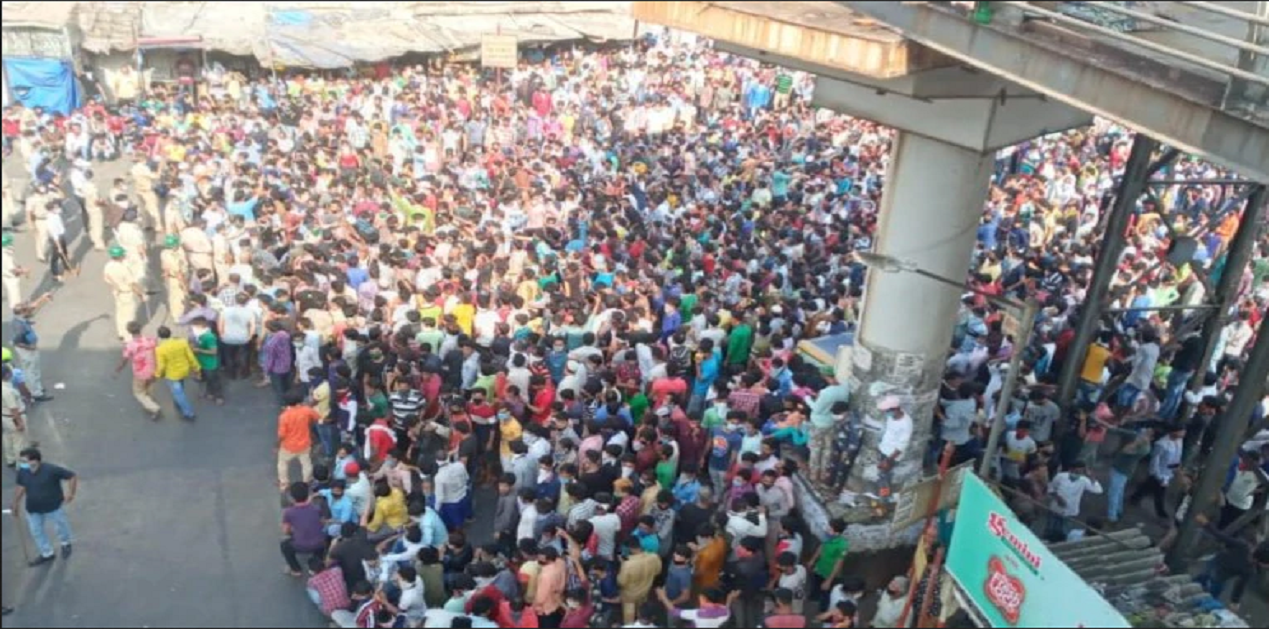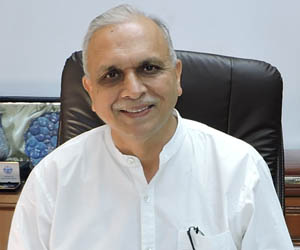With the Prime Minister’s announcement of the extension of the lockdown until May 3, 2020, anxieties about the depth and coverage of the coronavirus pandemic in India have deepened. The Prime Minister was categorical in stating that the lockdown enforcement will be stricter, hotspots will be monitored carefully. A gradual opening of the economic activity can be expected. The government has already announced guidelines to gradually open up economic activity in the rural areas from 20th April. This has been welcomed as a much-needed positive step.
During the three weeks of lockdown 1.0, the number of positive cases went up from 500 to over 10,000; a 20 fold increase. But, the government maintained that the situation would have been much worse had the lockdown not been in force. The period of doubling of the number of cases stretched from 4 days to 7 days, thereby indicating that the lockdown had slowed down the spread of the virus. At the current rate of doubling of cases every seven days, we could end up having about 50,000 cases by 3rd May.
Clearly, the situation is still serious. New hotspots are emerging. There have been cases of social distancing norms being violated as, for instance, in Bandra where several thousand migrant labourers, spurred by mischievous rumours, gathered in the hope that they would be able to go back home by special trains. The episode underlined the anxiety that migrant labourers continue to experience regarding their future. The feeling can grow if livelihoods continue to be lost.
Nevertheless, the major take away from the lockdown 1.0 was that people were generally disciplined in following the lockdown instructions; the Centre and States coordinated their positions, the government came out with relief packages for the poorest sections of the society, the health care system began to respond to the crisis. The hospitals have enough capacity so far to deal with the new cases.
The government got its act together and domestic manufacturing of the equipment started although it has yet to pick up speed. Large orders for procurement of the equipment (PPE) were placed including from China. About 30 indigenous manufacturers have been identified for the manufacturing of essential equipment. Order for 1.7 crore PPEs and 49,000 ventilators has been placed. Some deliveries have started. Two lakh indigenously produced ventilators were distributed amongst the hospitals.
It is rather surprising that India’s dependence on China for medical equipment continues despite efforts to indigenous manufacturing. China donated 1.7 lakh personal protection equipment (PPE) to India. About 16, 00,095 masks are available in the country and these are being supplemented by a further 2 lakh masks. Northern Railways also developed PPE overalls, in addition to the DRDO.
The experts, particularly from outside India, felt that India was not doing enough testing. Without that, it will not be able to make proper strategies. The government's testing strategy was reviewed and more testing is being conducted. The government has started doing more testing and over 1 lakh tests were done. Hotspots of virus outbreak were identified and sealed.
Around the world, including in India, a feverish race has started to invent the vaccine against COVID - 19. Yet, most experts felt that the vaccine is at least 12 months away. India’s leading laboratories i.e. Centre for Scientific and Industrial Research (CSIR labs) and Centre for Cellular and Molecular Biology (CCMB labs), Hyderabad and Institute of Genomics and Integrative Biology (IGIB), New Delhi have started sequencing the Novel Coronavirus genome to understand its nature. This will help in developing vaccines and cure of the virus.
Economy
The impact of the virus on the Indian economy was discussed at length in the media. The IMF lowered India’s growth projections for 2021 to 1.9% but predicted 7.4% for the next fiscal year.
The debate also focused on how much relief and stimulus package should be announced. Non-government experts feel that the support package of ₹ 1.7 trillion announced by the government is not sufficient. It accounts for only 0.8% of India’s GDP whereas in most countries the figure is much higher. The government should do more.
More is needed but how much? Various estimates ranging from 3 - 5% of GDP to 8 - 10% of GDP were mentioned. The question was how to mobilise such vast resources? Suggestions ranged from resorting to a high level of deficit financing, postponing the Fiscal Responsibility and Budget Management (FRBM) Act which places a cap on the fiscal deficit; taking money from the Reserve Bank of India, and even printing money if required. Experts have also been advising the government to put the money in the hands of small scale industries as well as others by forgoing taxes, debt relief and stimulus packages. The government, which is already facing the resource crunch, has yet to take a call on these suggestions.
The rabi harvest of wheat and mustard, the two crops crucial for food security, are ready to be harvested. The capacity of the industry to continue with the lockdown without any economic activity is putting a strain on them. The daily wage earners are suffering the most as their livelihoods have evaporated. These concerns were debated at length although no perfect solutions are in sight.
Despite the steps and government’s assurances, a sense of anxiety and worry continues to prevail in lockdown 2.0. One cannot be sure when the peak will be reached although there were some hopeful signs of a slight decline in the rate of growth of the cases
People also began debating about rebuilding India post Corona, a world which is expected to be different from the world before the coronavirus outbreak. A view was gathering momentum that India should reduce its dependence on China for critical supplies and instead build indigenous capabilities in pharmaceuticals, medical devices and other areas. A return to self-reliance and SWADESHI was also suggested.
Students, teachers and the entire education system is presently suspended. Students are growing anxious about their future. University admissions and entrance examinations have become uncertain. While some online courses have started, a systematic rather than an ad hoc approach is needed. The structure of the education system might undergo major changes in the future. The new education policy, which is still under the consideration of the government, may have to take into account online learning as a dominant mode of education.
Work from home is likely to become a norm. But this will not be an easy option. The infrastructure, rules norms guidelines will have to be evolved to make it a reality. Further, not all sectors of the economy are amenable to remote working.
Global impact
Globally, the pandemic continues to spread with over 2 million cases and 100,000 deaths. The United States surpassed every other country in the number of cases and deaths. It recorded over half a million corona -positive cases with more than 20,000 deaths. However, to put it in perspective, during the 2018-19 influenza season there were 35,000 deaths in the US among the 35 million people who contracted the influenza virus.
The US has lost its prestige in the eyes of the people. China also stands discredited. In the post-Corona virus world, US-China rivalries are likely to intensify, international cooperation will suffer and nationalism and even hyper- nationalism may arise. China will not miss the opportunity to build a China centric world although it may not succeed in doing so because its image has taken a severe beating.
Taking advantage of the global uncertainty and with a view to draw attention to itself, North Korea conducted a series of short-range missiles tests. Cybercrime incidents have increased many folds as online activity has surged during the global lockdowns.
President Trump has accused the World Health Organisation Director General of being highly partial to the Chinese. He has announced suspension of US funding to the WHO. This has started an unsavoury controversy about an institution whose working has come under increasing scrutiny because of the China factor. It is clear that like other international institutions, the WHO also requires reforms. But, the undermining of the organisation when a pandemic is raging across the world and a large number of developing countries depend on it for help and assistance, should be avoided.
Indian Model
Coronavirus has brought in a lot of uncertainties. India, thanks to the scale of its population, has followed a model suited to its needs to deal with the crisis. It has had a mixed record so far. The worst is not yet over. The economy cannot remain in a suspended mode for too long. The curve may flatten due to the lockdown but we may have to accept that virus is here to stay with us.
In such an uncertain world, India has a chance to rethink its policies. To begin with, it must recover its manufacturing capabilities which it had lost to China. The dependence on China for imports of raw materials, intermediates and capital goods, active pharmaceuticals must be reduced. Domestic manufacturing must be resumed. Sectors like health care, education should be rebuilt. On the international front, India should reach out to the global South where social capital is required to be strengthened. That is where India’s strengths lie. This also allows rebuilding local supply chains and regional integration.
(The paper is the author’s individual scholastic articulation. The author certifies that the article/paper is original in content, unpublished and it has not been submitted for publication/web upload elsewhere, and that the facts and figures quoted are duly referenced, as needed, and are believed to be correct). (The paper does not necessarily represent the organisational stance... More >>
Image Source: https://akm-img-a-in.tosshub.com/indiatoday/images/story/202004/0afe569e-bbf4-4325-8a95-bb968d-770x433.jpeg?yC8xJPp1RA0oVmSTdMM1Wzb5Gq5lgj2X











Post new comment